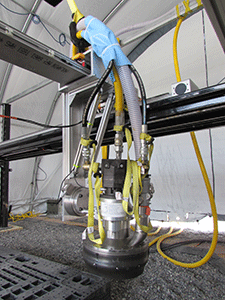###
About PNNL
Pacific Northwest National Laboratory draws on its distinguishing strengths in chemistry, Earth sciences, biology and data science to advance scientific knowledge and address challenges in energy resiliency and national security. Founded in 1965, PNNL is operated by Battelle and supported by the Office of Science of the U.S. Department of Energy. The Office of Science is the single largest supporter of basic research in the physical sciences in the United States and is working to address some of the most pressing challenges of our time. For more information, visit the DOE Office of Science website. For more information on PNNL, visit PNNL's News Center. Follow us on Twitter, Facebook, LinkedIn and Instagram.

 has been an unwelcome “guest” since World War II, especially when some tanks started leaking years ago. While some single-shell tanks have been emptied, engineers have struggled with how to get the remaining, partially solidified waste out of the remaining tanks. This waste must be retrieved and pumped into double-shell tanks before it can be transformed into a stable, glasslike substance for final disposal.
has been an unwelcome “guest” since World War II, especially when some tanks started leaking years ago. While some single-shell tanks have been emptied, engineers have struggled with how to get the remaining, partially solidified waste out of the remaining tanks. This waste must be retrieved and pumped into double-shell tanks before it can be transformed into a stable, glasslike substance for final disposal.